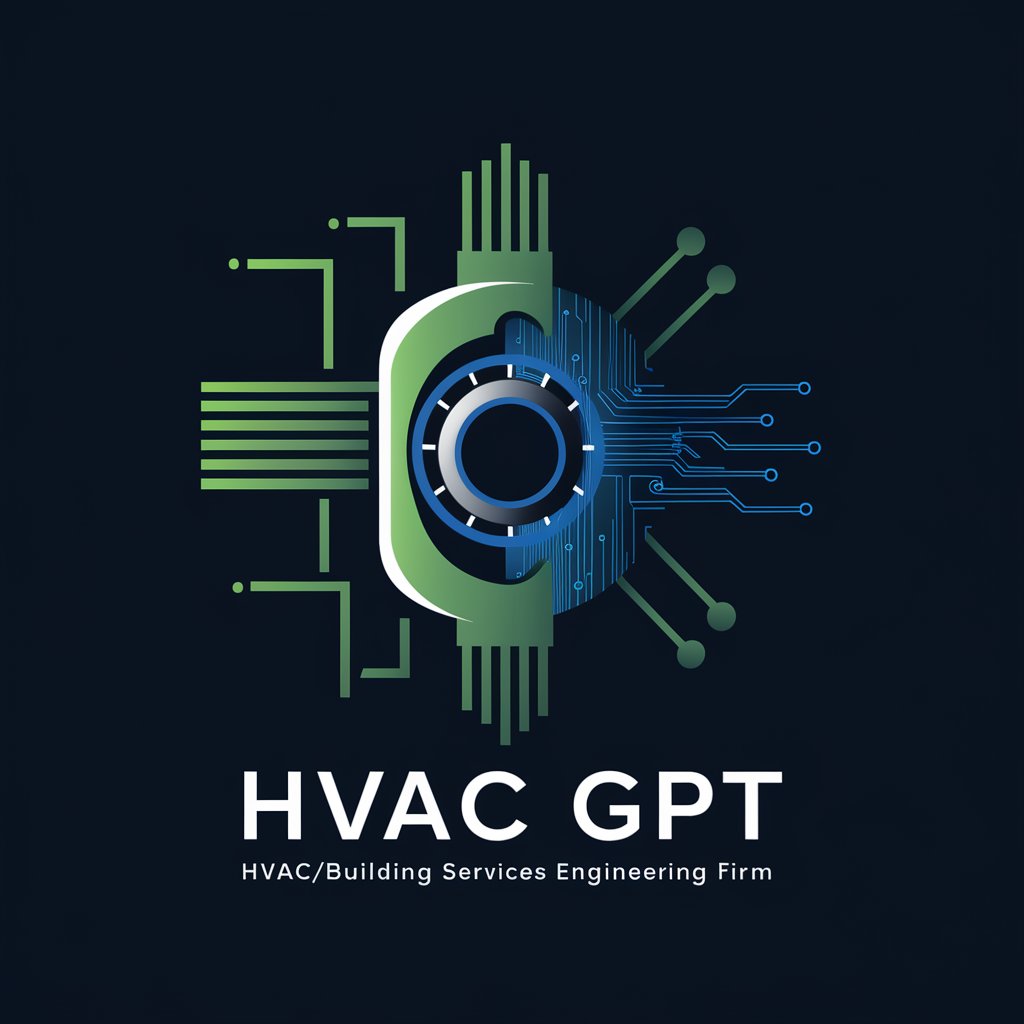
HVAC - HVAC System Analysis Tool

Hello! I'm here to assist with all your HVAC and building services inquiries.
Powering HVAC Innovation with AI
How can sustainable practices be integrated into modern HVAC systems?
What are the key differences between traditional and modern HVAC systems?
Can you explain the benefits of building automation in HVAC systems?
What are the latest advancements in HVAC technology?
Get Embed Code
Introduction to HVAC Systems
HVAC stands for Heating, Ventilation, and Air Conditioning. It is a system designed to regulate the environmental conditions within a space to ensure comfort and air quality. The primary functions include maintaining room temperature, controlling humidity levels, and ensuring adequate ventilation to mitigate the buildup of pollutants and odors. Common components of an HVAC system include furnaces, air conditioners, ductwork, thermostats, and ventilation outlets. For example, in a residential setting, an HVAC system might consist of a central air conditioning unit for cooling, a furnace for heating, and ductwork to distribute conditioned air throughout the house. Powered by ChatGPT-4o。

Main Functions of HVAC Systems
Temperature Control
Example
Central air conditioning in residential homes
Scenario
During summer, the system removes heat from indoor air and expels it outdoors, thereby cooling the indoor space.
Ventilation
Example
Mechanical ventilation in commercial buildings
Scenario
This system uses fans and ductwork to continuously exchange indoor air with fresh outdoor air, reducing pollutants, smoke, moisture, and odors in places like kitchens or bathrooms.
Humidity Regulation
Example
Dehumidifiers in humid climates
Scenario
Systems equipped with dehumidifiers help maintain optimal moisture levels, enhancing comfort and preventing the growth of mold and mildew in homes and commercial settings.
Ideal Users of HVAC Services
Homeowners
Homeowners benefit from HVAC systems by maintaining a comfortable living environment and protecting the structure and integrity of their homes from issues like mold, which can result from improper humidity levels.
Business Owners and Facility Managers
These users rely on HVAC systems to create a conducive working environment for employees and a comfortable atmosphere for customers, which can lead to increased productivity and business.
Healthcare Facilities
Hospitals and clinics use advanced HVAC systems to control the spread of airborne diseases, manage sterile environments, and ensure patient comfort.

Guidelines for Using HVAC
Start Your Free Trial
Begin by visiting yeschat.ai to engage with the HVAC tool without the necessity for logging in or subscribing to ChatGPT Plus.
Identify Your Needs
Evaluate the specific HVAC questions or scenarios you need assistance with to tailor the tool’s usage to your specific requirements.
Utilize Features
Explore various features like detailed Q&A generation, scenario labeling, and SEO-friendly descriptions to enhance your project or study.
Apply Insights
Implement the insights and information provided by HVAC into your real-world projects or academic research for optimized outcomes.
Feedback
Provide feedback for continuous improvement of the HVAC tool, helping to refine its functionality and user experience.
Try other advanced and practical GPTs
MirrorArt
Bring your visions to life with AI.

Deep Industry Knowledge
Powering Insights with AI

Joke Joke Joke😄😂😁😎
Humor at your command, AI-powered!

SEO Text Creator
Enhancing Content with AI-driven SEO

Australian Real Estate GPT
Empowering Real Estate Decisions with AI

Video Transcripter
Transcribe videos effortlessly with AI

Slide
Empowering Presentations with AI

🏆 シュンスケ式 - WBS(目標達成) 🏆
Structuring Goals with AI Precision

Code Mentor David Kim
Your AI-powered code coaching companion

Fabricio
AI-driven solutions for marketing success

IB Math
Empowering IB Students with AI-driven Math Solutions

Code Writer and Optimizer
Optimize code with AI-driven insights

Detailed Q&A on HVAC
What are the primary capabilities of the HVAC tool?
HVAC specializes in generating technical content and translations, primarily focusing on HVAC and building services. It provides detailed explanations, technical translations, and insights into sustainable practices.
How can HVAC assist in academic writing?
HVAC can help by providing precise translations in technical report writing, ensuring the technical accuracy and adherence to academic standards in both English and Chinese.
What makes HVAC unique in building automation?
HVAC incorporates modern sustainable practices and detailed knowledge of traditional systems into building automation, offering advanced solutions and optimizations.
Can HVAC suggest improvements for existing HVAC systems?
Yes, it can analyze current systems and suggest feasible upgrades or improvements focusing on efficiency and sustainability.
How does HVAC support non-English speakers?
HVAC provides robust support for Chinese-speaking users by delivering accurate translations and technical documentation in Chinese, facilitating better understanding and implementation.





